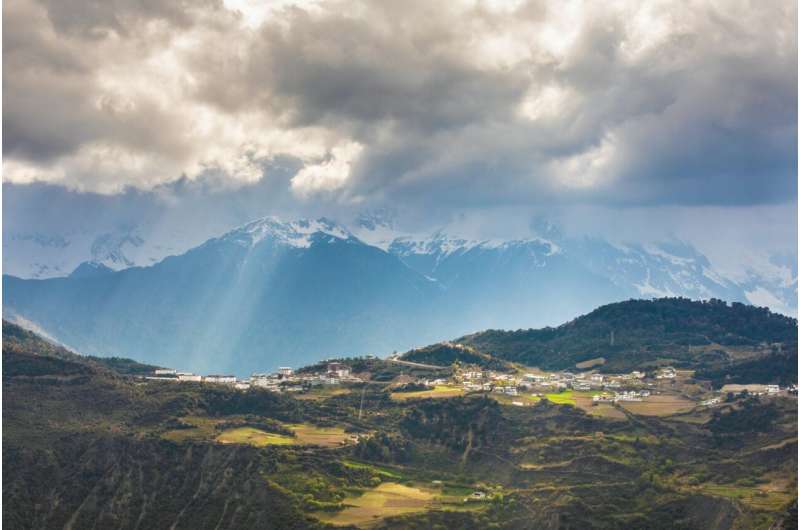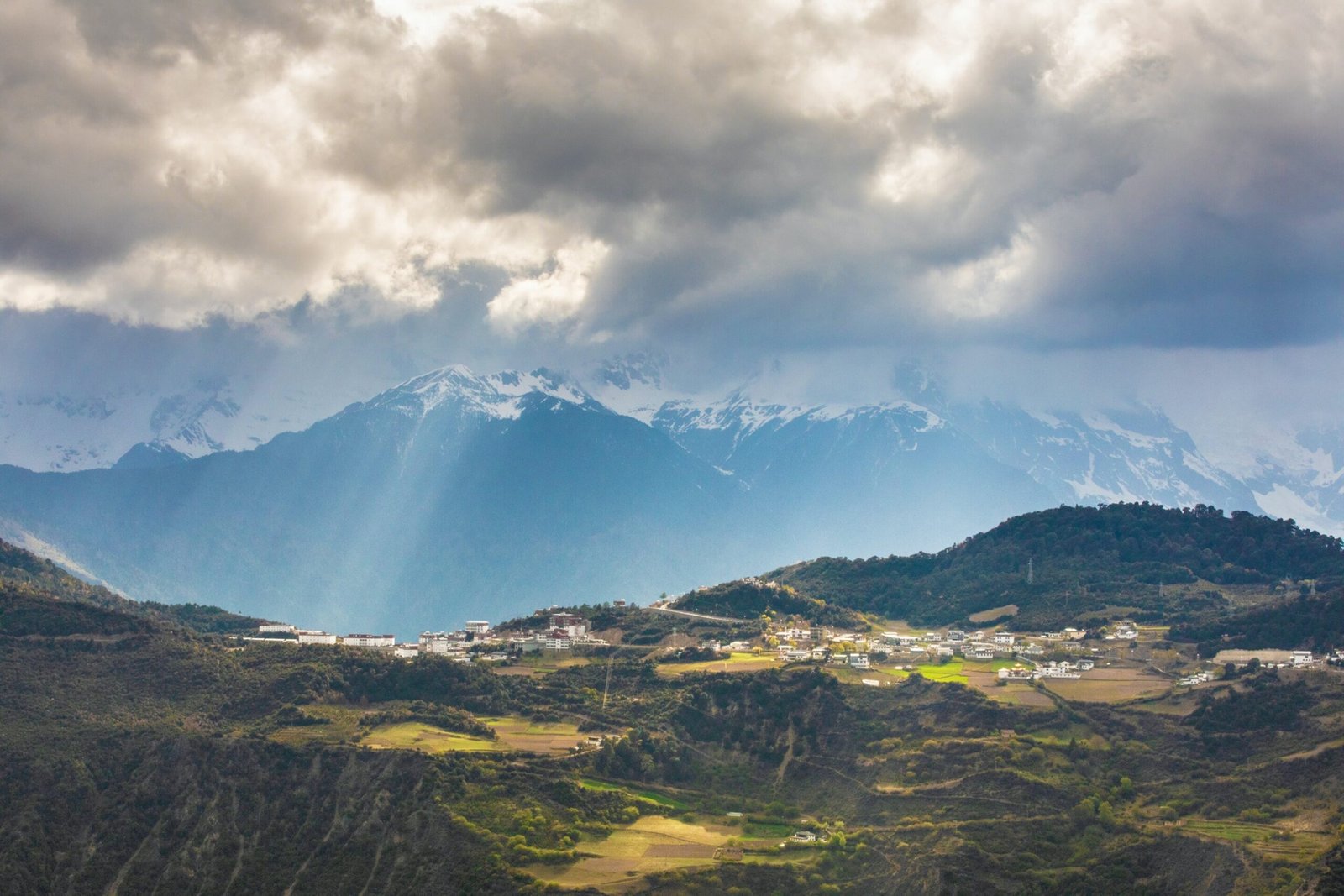
Imagine the conductor of a vast orchestra stood not at the front, but in the middle of all the musicians, dictating how they work together and the music they produce. The musicians are not stationary; they move past each other and interact, but all the while still controlled by the unmoving conductor.
In the atmospheric sciences, many such orchestras exist; and in the Asian midlatitudes, two key parts of the orchestra are a pair of atmospheric circulation systems—the midlatitude westerlies and the Asian monsoon—and the conductor, stood still at the heart and guiding the interplay between these two systems, is the Tibetan Plateau.
In a special issue of the journal Atmospheric and Oceanic Science Letters, a collection of eight papers have been published that together provide a picture of our current understanding of how the Tibetan Plateau, with its unique geographical position and characteristics, conducts this atmospheric synergy between the westerly and Asian monsoon systems.
This is important not only for elucidating and predicting related hydroclimatic changes in the Tibetan Plateau region itself, but also because these interactions have far-reaching impacts on the weather and climate of China, Asia, and even atmospheric circulations operating at the global scale.
Central to the findings reported in this compendium is the Second Tibetan Plateau Scientific and Research (STEP) program, initiated in 2017. This large-scale expedition focuses on understanding the intricate dynamics of the Tibetan Plateau, including its geological, ecological, and atmospheric processes, within which the interplay of these processes with the westerly and monsoon circulation systems forms one of the key research objectives.
As such, extensive sampling and systematic observations have been established across the Tibetan Plateau, the data from which have yielded new evidence and insights into the underlying mechanisms of the interaction between these two systems, the role played by the Tibetan Plateau, and their related responses and feedbacks to larger-scale phenomena such as climate change.
“Some specific highlights of these studies,” explains Professor Riyu Lu, one of the Lead Editors of the special issue, “include how the improved observation network across the Tibetan Plateau has boosted our understanding of water vapor changes, and how investigating land–atmosphere interactions and hydroclimate responses in high-altitude ecosystems has led to a clearer picture of the variation in the permafrost active layer, which of course has major implications for global warming given the carbon locked within its depths.”
Besides understanding these aspects in the here and now, another key focus of the research published in this special issue is the future projection of hydroclimate extremes and water availability, which, of course, is crucial for mitigating the impacts of climate change in this socioeconomically vital region and beyond.
“The Tibetan Plateau stands as a critical focal point in global climate research, and its complex interactions with the westerly and monsoon circulation systems in this region serve to shape the climate both on a regional and global scale. The papers published in this special issue are a clear reflection of the importance of the current research efforts of the STEP program, as well as the need to continue addressing the significant challenges faced in this regard for future research endeavors,” concludes Professor Lu.
More information:
Yuanhai Fu et al, Projected changes in extreme snowfall events over the Tibetan Plateau based on a set of RCM simulations, Atmospheric and Oceanic Science Letters (2023). DOI: 10.1016/j.aosl.2023.100446
Xuelong Chen et al, Research progress on the water vapor channel within the Yarlung Zsangbo Grand Canyon, China, Atmospheric and Oceanic Science Letters (2024). DOI: 10.1016/j.aosl.2024.100462
Ying Na et al, Isolated deep convections over the Tibetan Plateau in the rainy season during 2001–2020, Atmospheric and Oceanic Science Letters (2024). DOI: 10.1016/j.aosl.2024.100489
Lingyun He et al, A study on the simulation of carbon and water fluxes of Dangxiong alpine meadow and its response to climate change, Atmospheric and Oceanic Science Letters (2024). DOI: 10.1016/j.aosl.2024.100507
Yonghao Jiang et al, Variation in the surface heat flux on the north and south slopes of Mount Qomolangma, Atmospheric and Oceanic Science Letters (2024). DOI: 10.1016/j.aosl.2024.100513
Jinglong Huang et al, Variation in the permafrost active layer over the Tibetan Plateau during 1980–2020, Atmospheric and Oceanic Science Letters (2024). DOI: 10.1016/j.aosl.2024.100536
Hui Qiu et al, Future changes in precipitation and water availability over the Tibetan Plateau projected by CMIP6 models constrained by climate sensitivity, Atmospheric and Oceanic Science Letters (2024). DOI: 10.1016/j.aosl.2024.100537
Yumeng Liu et al, Interdecadal variability of summer precipitation in the Three River Source Region: Influences of SST and zonal shifts of the East Asian subtropical westerly jet, Atmospheric and Oceanic Science Letters (2024). DOI: 10.1016/j.aosl.2024.100538
Provided by
Chinese Academy of Sciences
Citation:
How the Tibetan Plateau is helping us to understand the current and future climate (2024, September 19)
retrieved 19 September 2024
from https://phys.org/news/2024-09-tibetan-plateau-current-future-climate.html
This document is subject to copyright. Apart from any fair dealing for the purpose of private study or research, no
part may be reproduced without the written permission. The content is provided for information purposes only.
